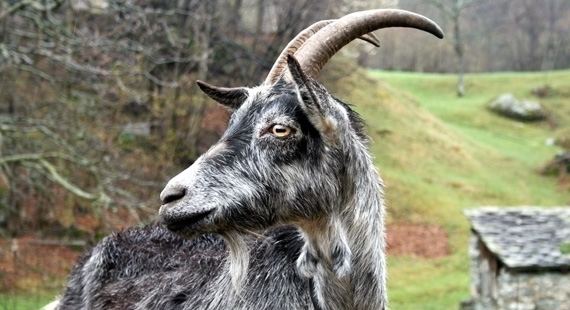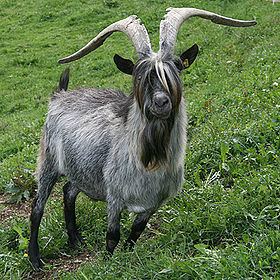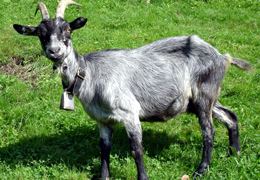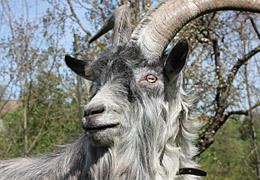Country of origin Switzerland Standard Capra Grigia Schweiz Rank Breed | Distribution GrisonsTicino | |
 | ||
Conservation status FAO (2007): critical-maintained Other names French: Chèvre grise des montagnesGerman: Graue Bergziege Use meatmilkvegetation management Similar Booted Goat, Peacock goat, Appenzell goat, Valais Blackneck, Tauernsheck | ||
The Capra Grigia, French: Chèvre grise des montagnes, German: Graue Bergziege, is a rare and endangered indigenous breed of domestic goat from Switzerland. It originates in the valleys of the cantons of the Grisons or Graubünden in the eastern part of the country, and of Ticino or Tessin in the south. It is possibly related to the grey type of the Passeirer Gebirgsziege from the Autonomous Province of Bolzano in north-eastern Italy.

History

Documentation of the Capra Grigia in the valleys of the Ticino and the Grisons goes back more than 100 years. Three regional types were distinguished: the Bleni-Valmaggia or Lavizzarer, the Liviner or Misoxer, and the Riveria. The breed was not recognised in the reorganisation of Swiss goat breeds in 1938, and Caprine Arthritis Encephalitis (CAE) in the mid-20th century contributed to its near-total disappearance. The Swiss association ProSpecieRara launched a conservation and recovery project for the Capra Grigia in 1997, recorded all surviving members in a herd-book, and started a controlled breeding programme. Breed standards were formulated in 2005, and in 2006 the Capra Grigia was officially recognised as a Swiss breed. In 2007 its conservation status was listed by the FAO as "critical-maintained". In 2008 five apparently similar goats were discovered in the Valchiavenna in Italy, which increased the gene pool. In 2011 a breed association, Capra Grigia Schweiz, was formed.
At the end of 2011 a population of 475–490 was reported to DAD-IS.

